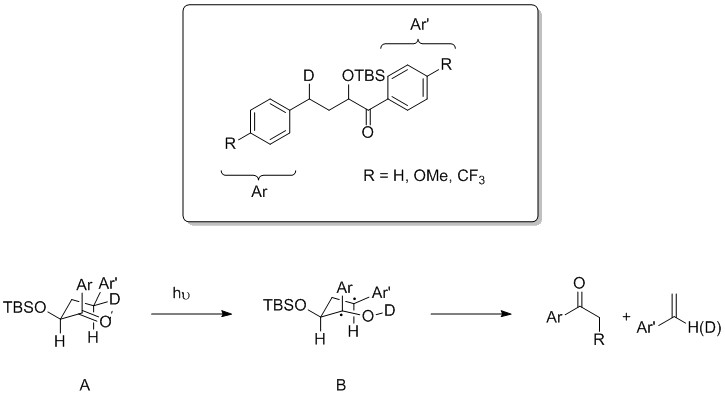Towards an Excited State Hammond Postulate
Classical thermal reactions can be studied by estimating the location of the transition state along the reaction coordinate using Hammond’s postulate. Photochemical reactions, however, lack simple qualitative tools to determine the location of the conical intersections (CI) on the potential energy surfaces leading to the products, and complex quantum mechanics calculations are necessary in order to predict the outcome of a reaction.
In previous experimental work on photolysis of o-nitrobenzyl derivatives1,2, it was observed that the Bell-Evans-Polanyi principle was followed, and the position of the CI varied with the substituents. This suggests that Hammond’s postulate may be applicable to CIs in the excited state.
In order to probe the influence of the position of the CI with respect to the energy level of the reactants and products, the following reaction system was designed:

A reactant-like CI should be stereochemically biased (A), whereas a product-like CI should be stereochemically unbiased (B). Ar and Ar’ influence both the energy level of the reactant and the position of the CI.
The above substrates will be synthesised then submitted to a series of photolyses, and the ratio of styrene/styrene-d1 will be analysed as a function of the substituent Ar’. The reaction will be performed for both isomers in order to take into account the isotope effect.
[1] Tomáš Šolomek, Christian G. Bochet, Thomas Bally, Chemistry - A European Journal, 2014, 20, 8062-8067
[2] Tomáš Šolomek, Sébastien Mercier, Thomas Bally, Christian G. Bochet, Photochemical & Photobiological Sciences, 2012, 11, 548-555